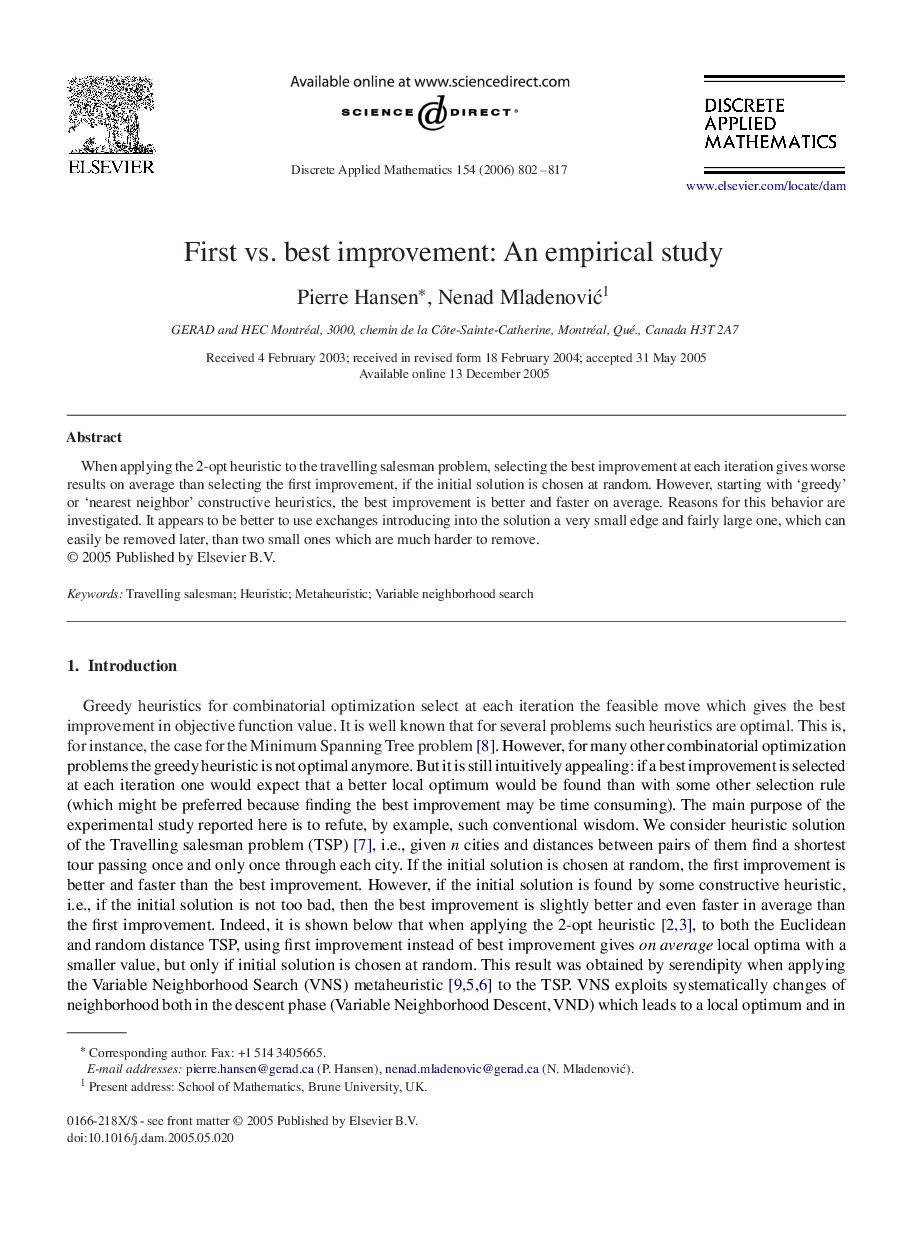| Article ID | Journal | Published Year | Pages | File Type |
|---|---|---|---|---|
| 420860 | Discrete Applied Mathematics | 2006 | 16 Pages |
Abstract
When applying the 2-opt heuristic to the travelling salesman problem, selecting the best improvement at each iteration gives worse results on average than selecting the first improvement, if the initial solution is chosen at random. However, starting with ‘greedy’ or ‘nearest neighbor’ constructive heuristics, the best improvement is better and faster on average. Reasons for this behavior are investigated. It appears to be better to use exchanges introducing into the solution a very small edge and fairly large one, which can easily be removed later, than two small ones which are much harder to remove.
Related Topics
Physical Sciences and Engineering
Computer Science
Computational Theory and Mathematics
Authors
Pierre Hansen, Nenad Mladenović,
